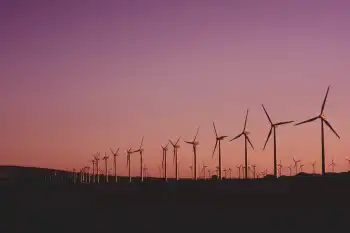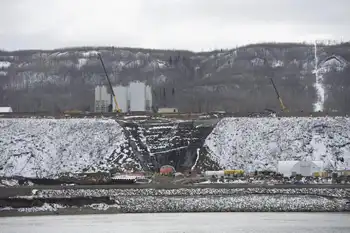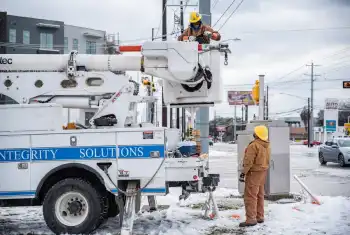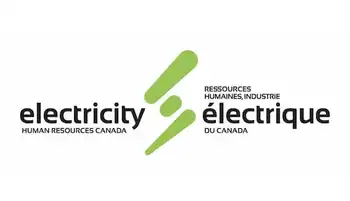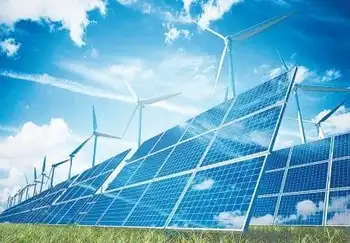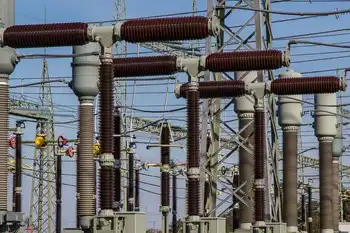Windfarm turbines deadly for birds and bats
By Globe and Mail
NFPA 70e Training
Our customized live online or in‑person group training can be delivered to your staff at your location.

- Live Online
- 6 hours Instructor-led
- Group Training Available
The 86 huge turbines on Wolfe Island, just outside Kingston, Ont., began to produce power about a year ago, and an on-going count of bird and bats that have been killed by the blades has been conducted since then.
A consultantÂ’s report covering the period between July and December of 2009 was released recently, indicating that 602 birds and 1,270 bats were killed by the turbines over that stretch. While the report says the numbers of dead birds and bats are similar to other wind farms in North America, Ottawa-based environmental advocacy group Nature Canada says the figures are actually surprisingly large and represent a significant threat to several endangered species.
“The monitoring reveals shockingly high numbers of fatalities of both birds and bats,” said Ted Cheskey, manager of bird conservation programs at Nature Canada. He said the figures underline what his organization has been arguing all along, that “there should not be wind turbines put in important bird areas or migratory corridors.”
The Wolfe Island fatality rate was about seven birds per turbine over the six-month period. Studies across North America show rates generally ranging from about 0.5 to about eight per year, but there is no number that is consider “normal.”
Mr. Cheskey said Wolfe Island is an internationally recognized “important bird area,” or IBA, for raptors – birds of prey such as owls and hawks that hunt for small mammals to eat. The numbers of those birds killed is worrying, he said, as is the mortality of swallows, which are in decline across Ontario.
The hundreds of bats killed is also cause for “grave concern,” he said, especially because they are less well understood than birds. “They are being massacred [and] we could be driving more species to extinction without understanding how or why.”
Nature Canada is not opposed to wind energy in general, Mr. Cheskey said, but it wants turbines sited to avoid disruption to wildlife. The organization has concerns about planned projects in Prince Edward County and near Point Pelee in Ontario, in southern Quebec, and near Medicine Hat in Alberta. All are regions with endangered bird habitats.
“We should not be putting these farms in places where the risk is going to be high,” he said. “It is a disaster that we can see coming.” At the very least, turbines should be shut down at certain times of year to reduce bird kills, he added.
TransAlta Corp., the Alberta-based energy giant that owns the Wolfe Island wind farm, insists that the death rates for birds and bats are within industry norms. “We are consistent with, or in many cases, below the levels seen elsewhere, whether it be eastern New York, North America or Ontario,” said Scott Hossie, TransAlta’s manager of environmental services for Eastern Canada.
Robert Hornung, president of the Canadian Wind Energy Association, an industry lobby group, said data gathered from wind farms generally shows bird mortality is relatively low, especially compared to the numbers killed when birds fly into high-rise buildings or because of climate change.
Bill Evans, an ornithologist in Ithaca, N.Y., who has reviewed the Wolfe Island report, said it is difficult to come to a firm conclusion about bird mortality at the site because only a half-year of data has been collected.
However, he said “Nature Canada’s stance is probably right” because the initial data does show high levels of deaths. Mr. Evans said the seven birds per turbine that were killed in the six-month study period is the second highest number he’s seen for any wind farm in North America. A full year of data will help clarify the picture, he said.
The government agencies that received the Wolfe Island bird-kill report have been cautious in their responses, indicating they want to see more data before coming to any conclusions. Still, in a letter to TransAlta, an official of the Ontario Ministry of Natural Resources noted that the number of raptors and vultures killed at Wolfe Island were “among the highest” of any wind farm in the province. An Environment Canada official told TransAlta that the death rate among raptors “merits continued, close monitoring in the future.”





